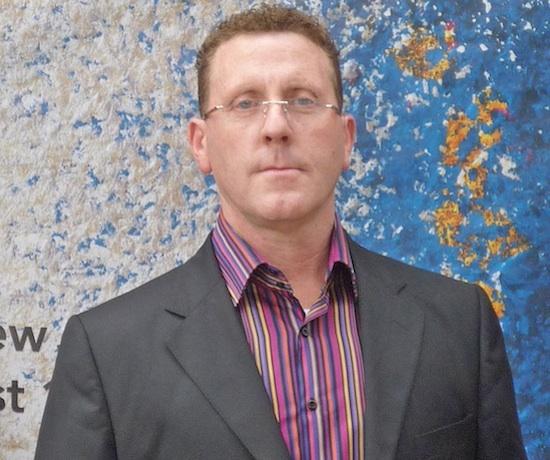
Artist Clyfford Still is best known as one of the first Abstract Expressionist painters, and a new exhibition at the Clyfford Still Museum in Denver examines his early breakthrough into this style.
“The War Begins: Clyfford Still’s Paths to Abstraction” offers a look into the artist’s personal and creative journey through the years of World War II.
Of the 65 works included in “The War Begins,” 40 are on public display for the first time, along with wartime photojournalism from Still’s library and blueprints from his shipyard job in the San Francisco Bay Area.
CPR News caught up with Dr. David Anfam, curator for “The War Begins,” to glean additional insight on this period of Still’s work.
CPR: Why did the Clyfford Still Museum decide to focus on this period in Still's artistic development?
David Anfam: It’s among the most critical turning points in Still’s entire career, yet we have never examined it in depth before. From 1941 onwards, Still’s art and his life changed dramatically. When he moved from Washington State to the San Francisco Bay Area to serve in the war industry, his work became more enigmatic, angular and abstract. In fact, there’s a sense in which Pearl Harbor catalyzed Still’s vision almost as much as it did the American nation.
CPR: Why do people tend to focus on Still's Abstract Expressionist works and forget about his more figurative earlier style?
David Anfam: Until the Clyfford Still Museum opened in 2011, people had never seen the earlier work. Even during Still’s lifetime, he rarely showed any of his works before 1945. But now that we are in our fourth year, the puzzle of his previously hidden early work is coming together. In short, Still’s formative output is amazing—powerful, inventive, even disturbing. He created more youthful work that was original and experimental than any of the Abstract Expressionists, including Pollock, Rothko and de Kooning. And by the time that Robert Motherwell started painting, Still had been at it for two decades.
CPR: Many of the paintings in this exhibition feature imagery influenced by World War II, but this was also a period of great personal change for Still. How do you think his personal life comes through in these paintings?
David Anfam: We excavated a fascinating quartet of images from the museum’s collection and its archives. There are paintings of his father and mother that demonstrate how good Still was at representation, not to mention a delightful pencil portrait of his baby daughter and a photograph of him with her. Here we see Still as a beaming father rather than the somber, almost scary figure that he usually struck.
CPR: What were some of the surprises that came to light as you developed this exhibition?
David Anfam: Firstly, that Still made such extensive studies of the industry in which he worked, ranging from tiny sketches in pencil and watercolor to big oil paintings. We even discovered two blueprints by Still, one of which is in the show. Secondly, it’s amazing to realize how far and fast his art traveled in just a few years. Around 1940, Still’s style remained semi-figurative. Then within four or five years, he’s become an abstract expressionist.
CPR: Please can you describe one or two of the highlights of the exhibition?
David Anfam: Personally, I love the oil painting of the mechanical parts that Still saw in the navy yards. You can recognize the steel components used to build a ship, but he sets them against a dark sky in such a way they look like ghostly actors in some mysterious ritual. I’m also fascinated by the big canvas called “PH-758.” It’s so strange that only after a while do you realize it resembles a hand held upright. This is pure Still: He makes what is familiar monumental and uncanny. And don’t miss the glass display case with the clippings from “Life” and other magazines that Still saved.
“The War Begins: Clyfford Still’s Paths to Abstraction” is on display through Jan. 18, 2015 at the Clyfford Still Museum in Denver.








